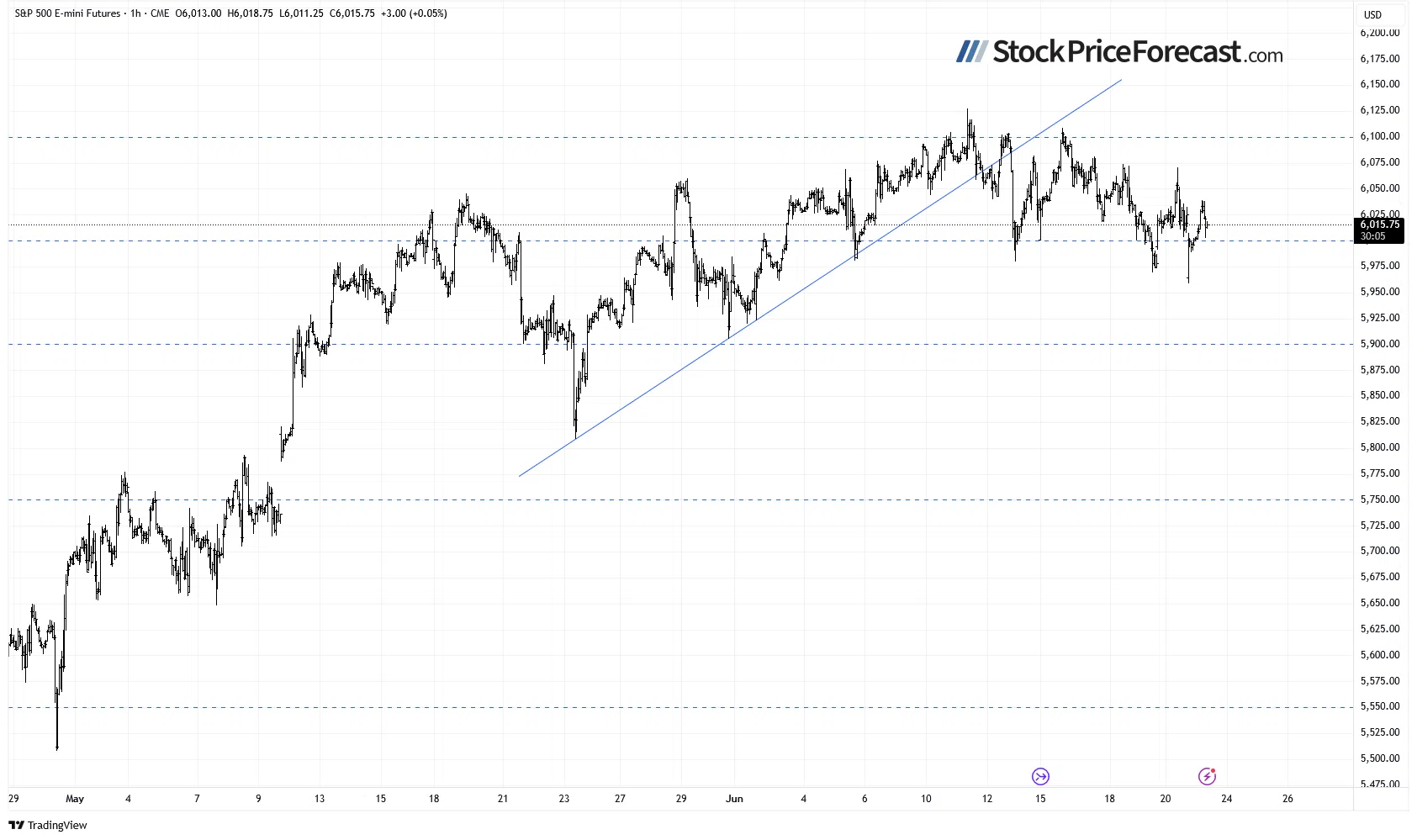Stocks Face Growing Uncertainty Amid Escalating Middle East Tensions
The S&P 500 is set to continue consolidating – what’s next?
Stocks pulled back slightly on Friday, with the S&P 500 index closing 0.22% lower - its lowest close since June 5, although it remains within its current trading range. U.S. involvement in the Israel-Iran conflict over the weekend led to a lower open in the S&P 500 futures contract and rallies in gold and oil prices. However, sentiment has since improved, and the futures are now pointing to a modest -0.1% decline at the open this morning.
Markets are now awaiting the release of key Flash Manufacturing and Services PMI data at 9:45 a.m. Attention will also turn to Fed Chair Jerome Powell’s testimony scheduled for tomorrow and Wednesday.
In my opinion, this remains a short-term consolidation phase, with no confirmed bearish signals at the moment.
Investor sentiment has slightly deteriorated, as reflected in the last Wednesday’s AAII Investor Sentiment Survey, which reported that 33.2% of individual investors are bullish, while 41.4% are bearish.
The S&P 500 pulled back below the 6,000 level last week, as the daily chart indicates.
(Click on image to enlarge)

S&P 500: Another Sideways Weekly Change
The S&P 500 lost 0.15% last week, which should be viewed as a relatively neutral reaction amid escalating tensions in the Middle East.
The index continues trading above the early May weekly gap-up, which is a bullish technical signal. However, resistance remains around 6,100.
(Click on image to enlarge)

Nasdaq 100 Hovering Near Recent Lows
The Nasdaq 100 closed 0.43% lower on Friday, showing relative weakness compared to the broader market. Still, the decline was rather muted given the geopolitical context.
Key support remains around 21,500, with resistance in the 22,000–22,200 range.
(Click on image to enlarge)

VIX Remains Around 20
Last Wednesday, the Volatility Index (VIX) dropped to a local low of 16.23, signaling reduced investor fear. However, it rebounded last week to a high of 22.00 amid rising Middle East tensions. On Friday, it remained slightly above 20.
Historically, a dropping VIX indicates less fear in the market, and rising VIX accompanies stock market downturns. However, the lower the VIX, the higher the probability of the market’s downward reversal. Conversely, the higher the VIX, the higher the probability of the market’s upward reversal.
(Click on image to enlarge)

S&P 500 Futures Contract: Fluctuating Around 6,000
This morning, the S&P 500 futures contract is trading above the 6,000 level after rebounding from an overnight low near 5,959.
Key support is in the 5,960–6,000 zone, marked by recent local lows. Resistance is around 6,100. The market remains sensitive to geopolitical developments and may continue to consolidate.
(Click on image to enlarge)

Conclusion
Stock prices are likely to open slightly lower to flat today - a better-than-expected outcome following the weak futures open triggered by Middle East tensions.
Will the market eventually correct more of its late-May gains? I think that for now, there are no confirmed bearish signals. It still looks like a consolidation within an uptrend.
Here’s the breakdown:
- The S&P 500 is set to extend its consolidation around the 6,000 level, despite geopolitical risks.
- There are no clear bearish signals yet, but a deeper downward correction is not out of the question at some point.
More By This Author:
Stocks Face Uncertainty Amid Middle East Tensions, Data, And FedStocks: Likely Rebounding From Friday Lows
Stocks To Fall On Israel-Iran Escalation
Disclaimer: All essays, research, and information found above represent analyses and opinions of Paul Rejczak and Sunshine Profits' associates only. As such, it may prove wrong and be a ...
more


